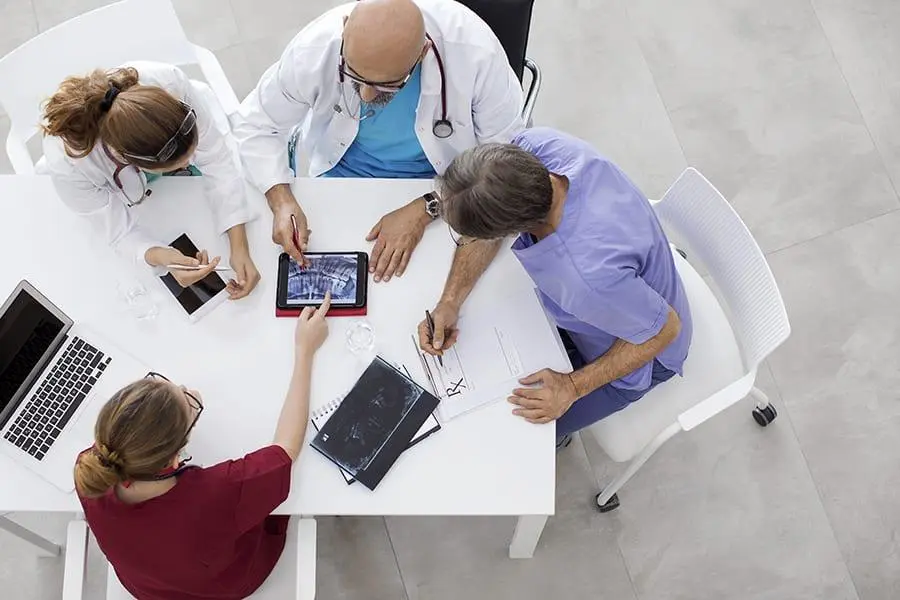Blog
Creating an Approachable Healthcare Office Environment

In today’s patient-centered healthcare landscape, the experience patients have when entering and interacting with a medical office is nearly as important as the care itself. An approachable healthcare office fosters trust, reduces anxiety, and encourages open communication—key elements that lead to better patient outcomes, higher satisfaction, and stronger retention. Building an approachable atmosphere involves more than smiling at the front desk; it encompasses everything from physical space and staff demeanor to technology and communication methods. Every touchpoint should reflect your commitment to accessibility, professionalism, and genuine care.
Design for Comfort, Accessibility, and Inclusion
| Aspect of Design | What it Means for Your Patients |
|---|
| First Impressions Matter | From the moment patients arrive, they should feel welcomed. Clear signs, easy-to-find parking, and smooth, barrier-free entry set the tone for a positive experience right away. |
| Creating a Calm Environment | Inside, the space should feel calm and inviting. Natural light, warm colors, and clutter-free areas help patients feel more at ease and less stressed when they walk through the door. |
| Comfort in Waiting Areas | Waiting should never feel uncomfortable. Offer a variety of seating options, and provide simple comforts like water, hand sanitizer, and magazines. Plus, make sure there’s space for mobility devices. |
| Making It Accessible | Pay attention to details that make it easy for everyone to navigate, like low check-in counters, wide hallways for wheelchairs, and accessible restrooms. |
| Sensory-Friendly Design | Be mindful of sensory sensitivities. Soft lighting, quiet areas, and reduced noise can make a world of difference for patients who are sensitive to sensory overload. |
| Celebrating Diversity | Ensure your space feels welcoming to everyone by including diverse artwork, reading materials, and multilingual signs. It shows patients you understand and respect their cultural backgrounds. |
Train Staff to Prioritize Empathy and Clarity
The demeanor and behavior of your team are among the most influential factors in how approachable your practice feels. Patients often arrive at healthcare offices feeling vulnerable, uncertain, or unwell. In these moments, empathy and clear communication can have an outsized impact.

Receptionists, medical assistants, and nurses should be trained not only in technical tasks but also in patient engagement. Tone of voice, body language, and the ability to explain processes in non-technical terms are critical. Greeting patients warmly by name, explaining wait times proactively, and checking in during longer appointments are simple but effective ways to make individuals feel seen and respected.
Use Technology to Reduce Friction
Technology, when used thoughtfully, can enhance the approachability of your practice by reducing barriers and streamlining interactions. For example, offering digital check-in or pre-appointment forms allows patients to provide information privately and at their own pace, which can be more comfortable than filling out paperwork in a crowded waiting room.
Secure messaging platforms and patient portals improve transparency by giving patients quick access to test results, follow-up instructions, or appointment scheduling without the need for a phone call. However, digital tools must be intuitive and mobile-friendly. Poorly designed systems can quickly erode the sense of ease you’re trying to build.
One key component often overlooked is the phone experience. Choosing the best phone system for medical office use is essential to maintaining efficient, patient-friendly communication. A modern phone system should support features like intelligent call routing, voicemail-to-email transcription, and real-time call analytics. These tools help ensure calls are answered promptly, messages are not lost, and follow-ups are handled efficiently—all of which directly influence how approachable and reliable your office appears to patients.
Conclusion
Approachability in a healthcare office is not achieved through a single change—it is the sum of thoughtful decisions across design, staffing, technology, and patient communication. By creating an environment that is physically welcoming, emotionally supportive, and operationally responsive, healthcare professionals can foster stronger relationships with patients and stand out in a competitive landscape. From investing in the best phone system for medical office operations to prioritizing empathy in every interaction, the most successful practices are those that make patients feel safe, heard, and respected at every turn.
